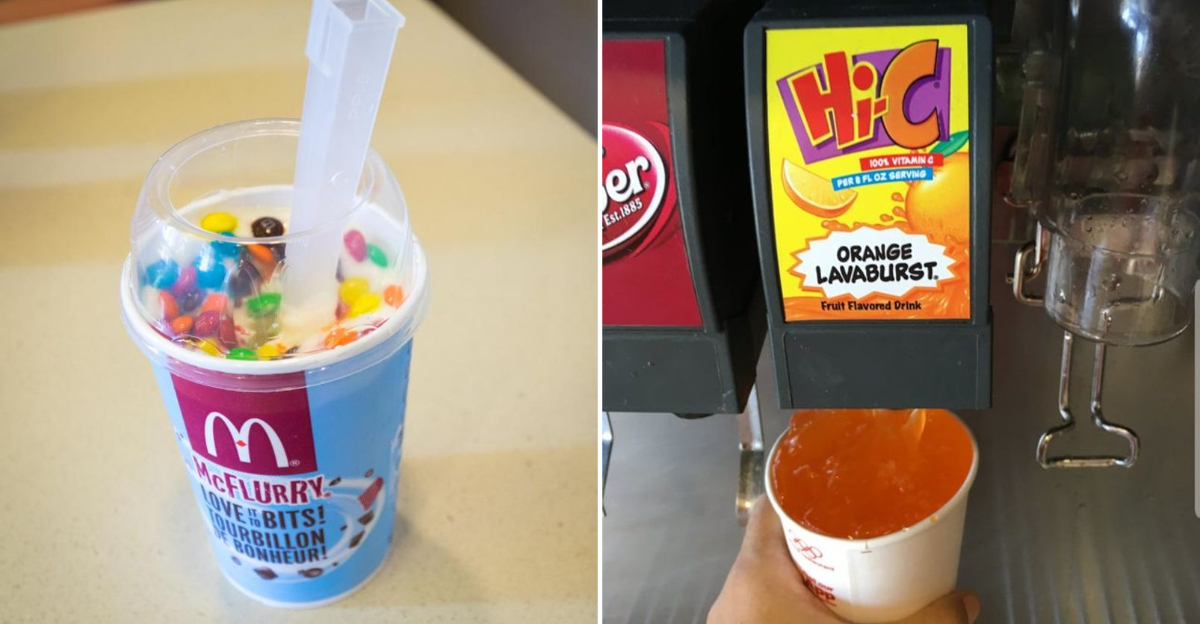New FDA Ban Targets 5 McDonald’s Menu Items For Artificial Dyes

In a bold new move, shaking up the fast-food industry, the FDA has issued a temporary ban targeting five McDonald’s menu items due to the use of artificial dyes.
The decision, part of a broader initiative under Health Secretary Robert F. Kennedy Jr., signals a nationwide push to phase out petroleum-based synthetic dyes by 2026.
While the items haven’t been permanently removed—yet—they’re now under intense review and must meet stricter health standards to remain on the menu.
This crackdown reflects growing concerns over the potential health risks linked to these additives, especially in children.
It marks a turning point in how America’s favorite fast-food chains handle food safety.
1. Mocha Frappe’s Secret Ingredient
Surprise! Your favorite caffeinated treat isn’t just coffee, milk, and chocolate. The Mocha Frappe contains caramel coloring (Color Additive E150d) that gives it that rich brown hue beyond what coffee alone provides.
My barista friend tipped me off years ago – many coffee drinks use added colors to maintain consistency between batches. The FDA’s new regulations specifically target this type of synthetic additive, claiming it contains potentially harmful compounds when produced with ammonia.
McDonald’s R&D team is reportedly scrambling to create a reformulated version that maintains the same appealing color without the flagged ingredients. The challenge? Finding alternatives that don’t affect taste, shelf-life, or that signature creamy texture we’ve all come to expect from the first sip to the last.
2. M&M McFlurry’s Colorful Controversy
Those tiny candy-coated chocolates swirled into vanilla soft serve have been my guilty pleasure since college! Unfortunately, the rainbow of colors in M&M’s comes from artificial dyes like Red 40, Yellow 5, and Blue 1 – exactly what the FDA is cracking down on.
McDonald’s faces a tough choice: reformulate with natural colorings or say goodbye to this beloved dessert. Natural alternatives like beetroot extract and turmeric might work, but they’re pricier and less stable.
When I tested natural food dyes in my kitchen last summer, they faded quickly – imagine the challenge for a global chain! The company has remained tight-lipped about their plans, but industry insiders suggest they’re already testing naturally-colored versions in select markets.
3. Fanta Orange’s Vibrant Sunset Glow
Nothing beats a Fanta Orange on a scorching summer day! That vivid orange color doesn’t come from nature, though – it’s primarily Yellow 6 and Red 40, two synthetic dyes now under FDA scrutiny.
Last week, I lined up glasses of various orange sodas for my nieces and nephews. They immediately reached for the brightest ones, proving exactly why manufacturers use these vibrant additives! The psychological appeal of bright colors is undeniable.
McDonald’s has partnerships with Coca-Cola (Fanta’s parent company), so this reformulation will require coordination between corporate giants. European versions of Fanta already use natural beta-carotene for coloring, offering a potential template. American consumers might soon notice a slightly different, less neon appearance in their cups, though the familiar citrus flavor should remain unchanged.
4. Hi-C Orange Lavaburst’s Fluorescent Farewell
Another orange-colored drink, another artificial dye under fire. Hi-C Orange Lavaburst, known for its neon glow and nostalgic appeal, contains a blend of Yellow 5, Yellow 6, and Red 40—exactly the synthetic additives now banned under new FDA regulations.
Popular among younger customers for its bold color and sweet flavor, the drink may soon face a reformulation. Natural alternatives like paprika extract or beta-carotene are being considered, though replicating the same intensity without raising production costs remains a challenge.
5. Shamrock Shake’s Lucky Charm Runs Out
The cult-favorite seasonal treat that has me setting calendar reminders every March isn’t naturally that enchanting green color. The Shamrock Shake gets its distinctive hue from Yellow 5 and Blue 1 dyes – now on the FDA’s hit list.
During my college years, I worked at McDonald’s and witnessed firsthand the excitement when these shakes appeared. The vibrant color is key to their appeal, signaling the arrival of spring and St. Patrick’s Day festivities.
McDonald’s faces a tricky situation with this one. Natural green colorings like spirulina and chlorella exist but can impart unwanted flavors and don’t achieve the same eye-catching mint green. Reformulation efforts are likely already underway to ensure the seasonal favorite returns next year, though loyal fans might notice a subtler shade in their cups.
